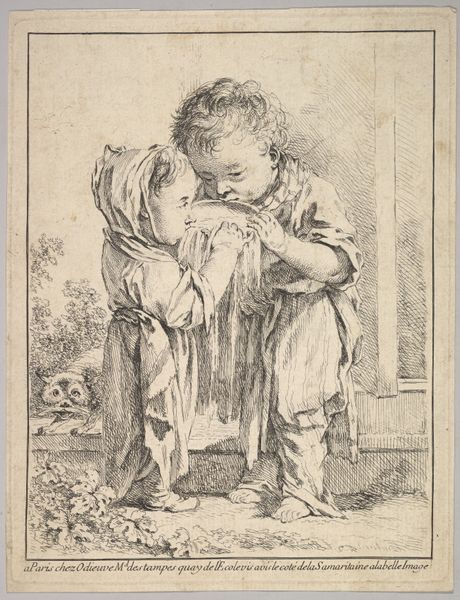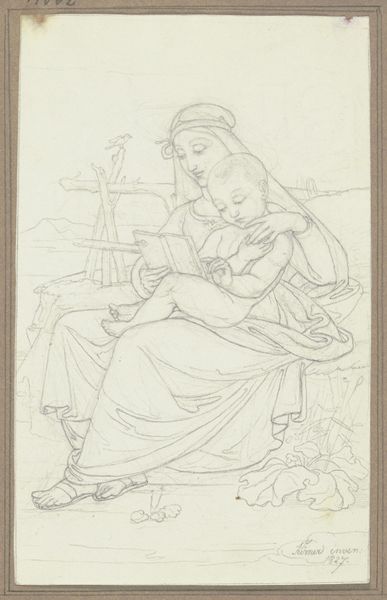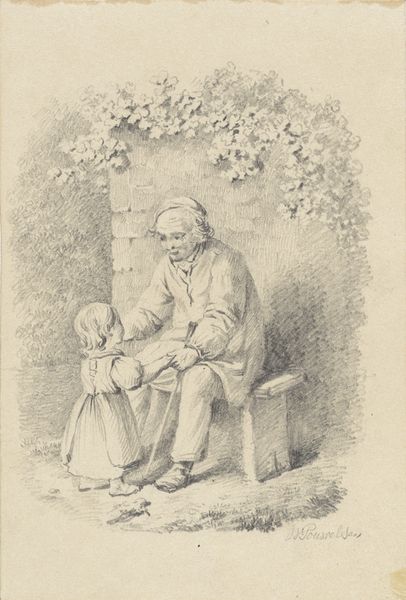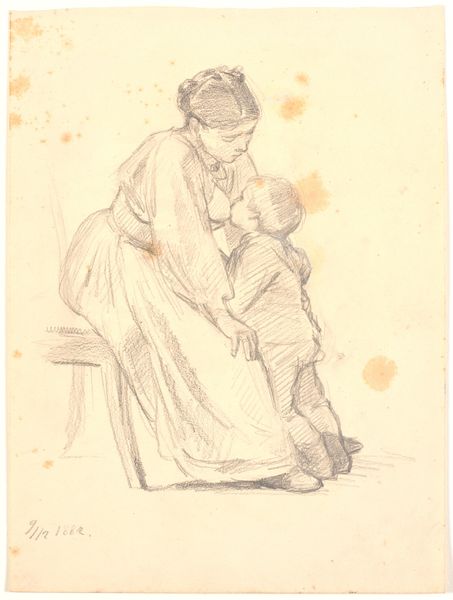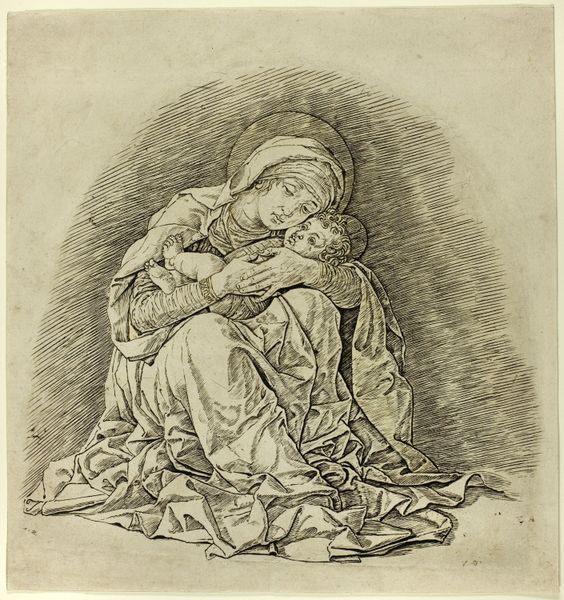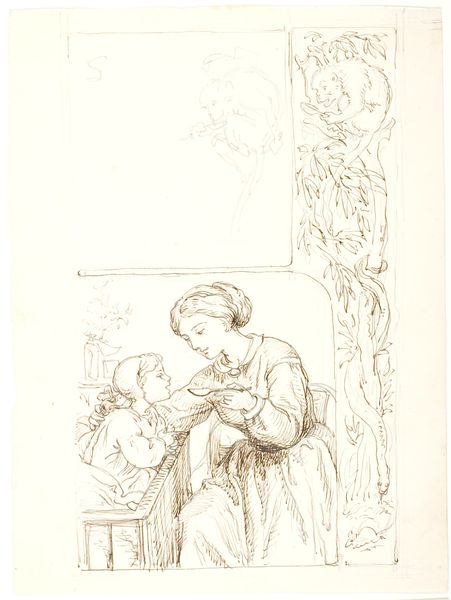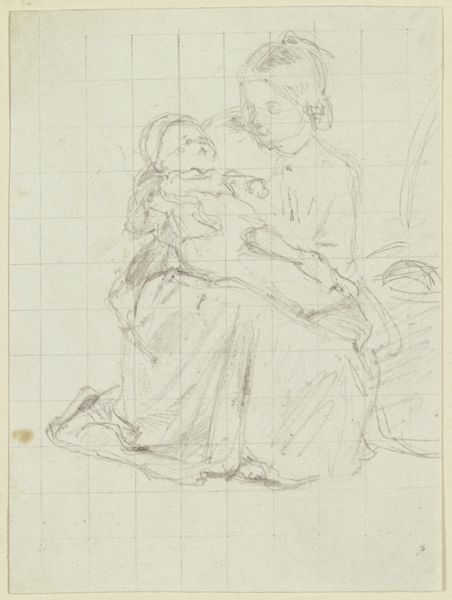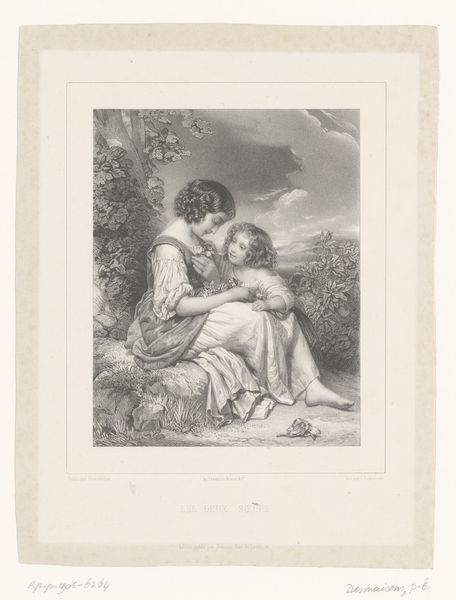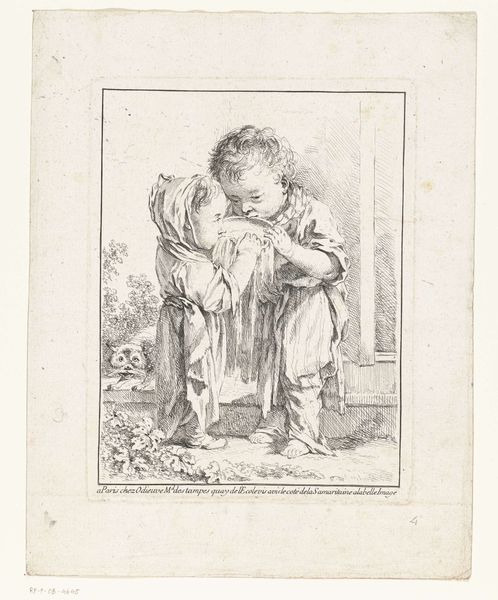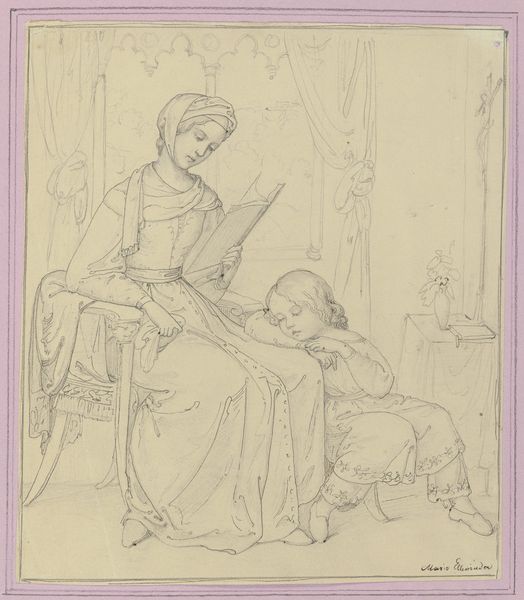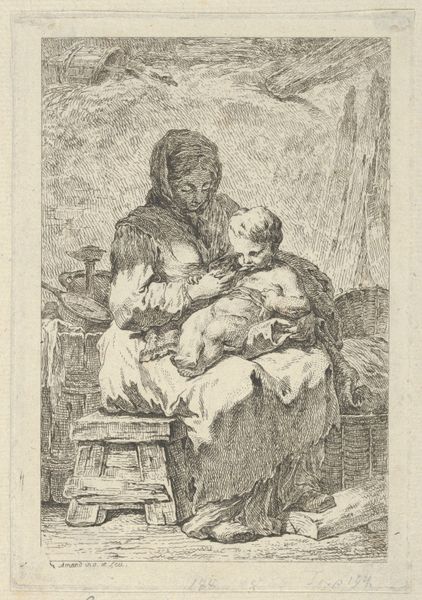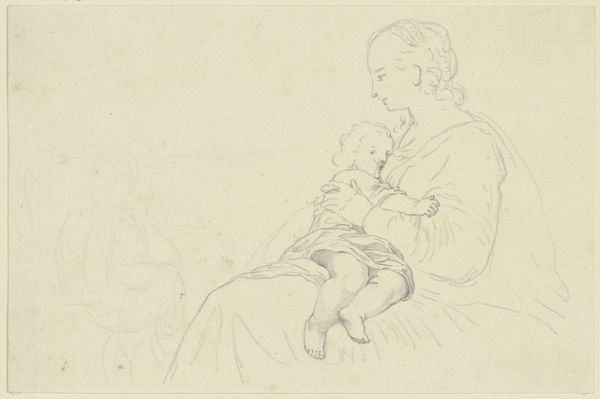
drawing, paper, pencil
#
portrait
#
drawing
#
imaginative character sketch
#
facial expression drawing
#
16_19th-century
#
quirky sketch
#
pencil sketch
#
paper
#
personal sketchbook
#
german
#
sketchwork
#
romanticism
#
pencil
#
sketchbook drawing
#
portrait drawing
#
genre-painting
#
sketchbook art
#
initial sketch
Copyright: Public Domain
Editor: Here we have Marie Ellenrieder's "Three girls with flowers", a pencil drawing on paper. It gives me a melancholic feeling; the subjects are positioned near what looks like a tomb or shrine. What can you tell me about this work? Curator: From a materialist perspective, it's important to consider the use of pencil, a relatively accessible medium, particularly in the 19th century. Pencil drawings were often preliminary sketches, studies for larger works, or personal expressions, rarely considered "high art". Notice the lack of erasure, as if embracing imperfection and speed, potentially reflective of artistic labor itself, which often involved relentless practice and fleeting inspiration. How might its intimate, almost scrapbook aesthetic affect its intended audience? Editor: That's interesting; I hadn't considered the implications of the medium itself. Does the Romanticism label connect to your materialist view? Curator: Yes, partly. The romanticized view of the humble peasant is also a marketing and consumer strategy of the industrial age, contrasting factory labor and idealized country life. So this style promoted both personal expression and a growing consumer culture with its class fantasies and desire to acquire authentic-feeling objects. Editor: That's given me a new way of seeing how artistic expression and commercial contexts intersect. I never thought of Romanticism having this angle. Curator: It highlights the economic and social structures shaping even the most seemingly sentimental and personal art. Understanding art production means investigating social contexts and class implications and material agency. Editor: That definitely gives a new appreciation to not only drawing practices, but its use for certain art movements in history. Thanks!
Comments
No comments
Be the first to comment and join the conversation on the ultimate creative platform.

